A simulation-based optimization method for emergency evacuation induced by gas pipeline leakage risk
Abstract
1. Introduction
2. Materials and methods
2.1. Study area and data

2.2. Leakage impact analysis method
| Radiative flux (kW/m2) | Manifestations of human injury | Impact radius |
|---|---|---|
| 37.50 | 100% of the people died within 1 min; 1% of the people died within 10 s | Death zone radius |
| 25.00 | 50% of the people died within 1 min; severe burns within 10 s | Severe wound zone radius |
| 12.50 | 10% of the people died within 1 min; minor burns within 10 s | – |
| 4.00 | More than 20 s will cause pain, but will not blister | Minor injury zone radius |
| 1.58 | There will be no discomfort in long-term contact | – |
| Overpressure (kPa) | Manifestations of human injury | Impact radius |
|---|---|---|
| 140 | Probability of death from pulmonary hemorrhage by shockwave is 50% | Death zone radius |
| 44 | Probability of eardrum ruptures caused by shockwave is 50% | Severe wound zone radius |
| 17 | Probability of eardrum ruptures caused by shockwave is 1% | Minor injury zone radius |
2.3. ALOHA-based simulation method
| Parameter | Unit | Parameter | Unit |
|---|---|---|---|
| Gas | LPG (100% methane) | Altitude | 2.73 m |
| Pipe diameter | 813 mm | Wind speed | 5 m/s |
| Internal pressure | 8.5 Mpa | Direction of wind | NW |
| Ambient temperature | 14 °C | Humidity | 25% |
| Diameter of leak hole | 100 mm | Ground state | Urban |
| Longitude and latitude | E117°56′, N39°03′ | Degree of cloud cover | 50% |
Abbreviation: LPG, liquefied petroleum gas.
2.4. Simulation model of evacuation
2.5. Optimization model of evacuation strategies
3. Results and discussion
3.1. Analysis of accident impact radius
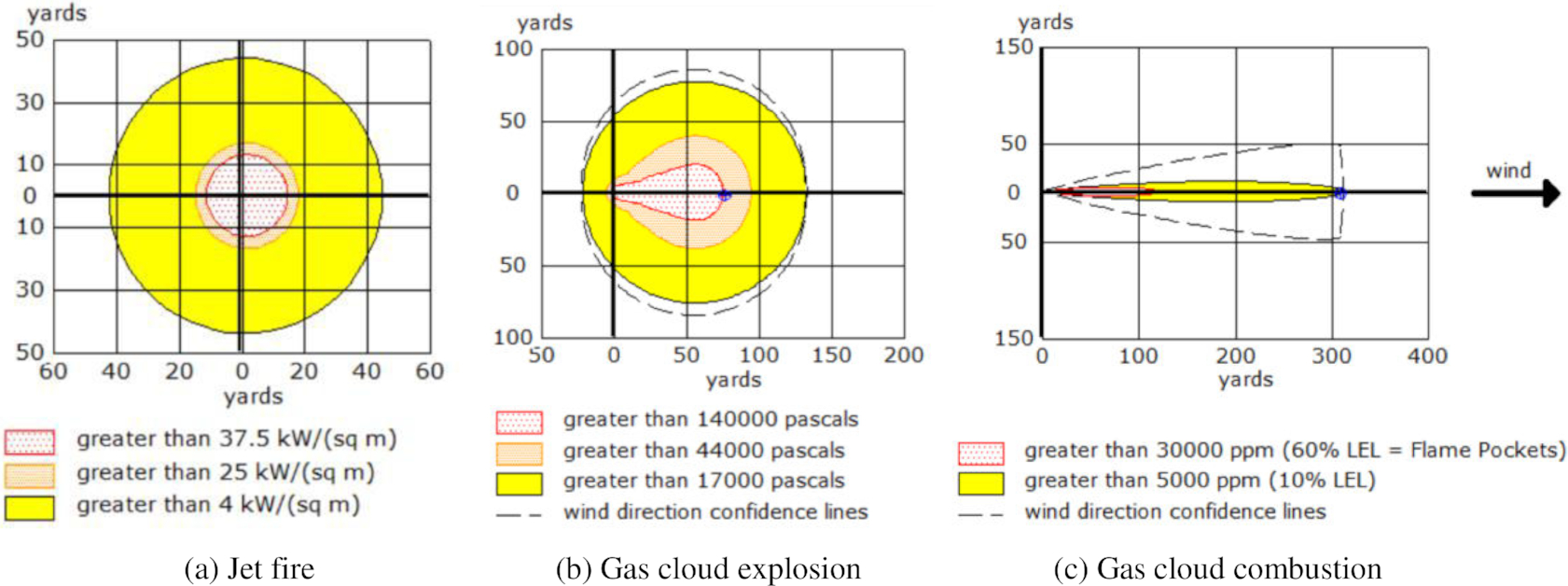
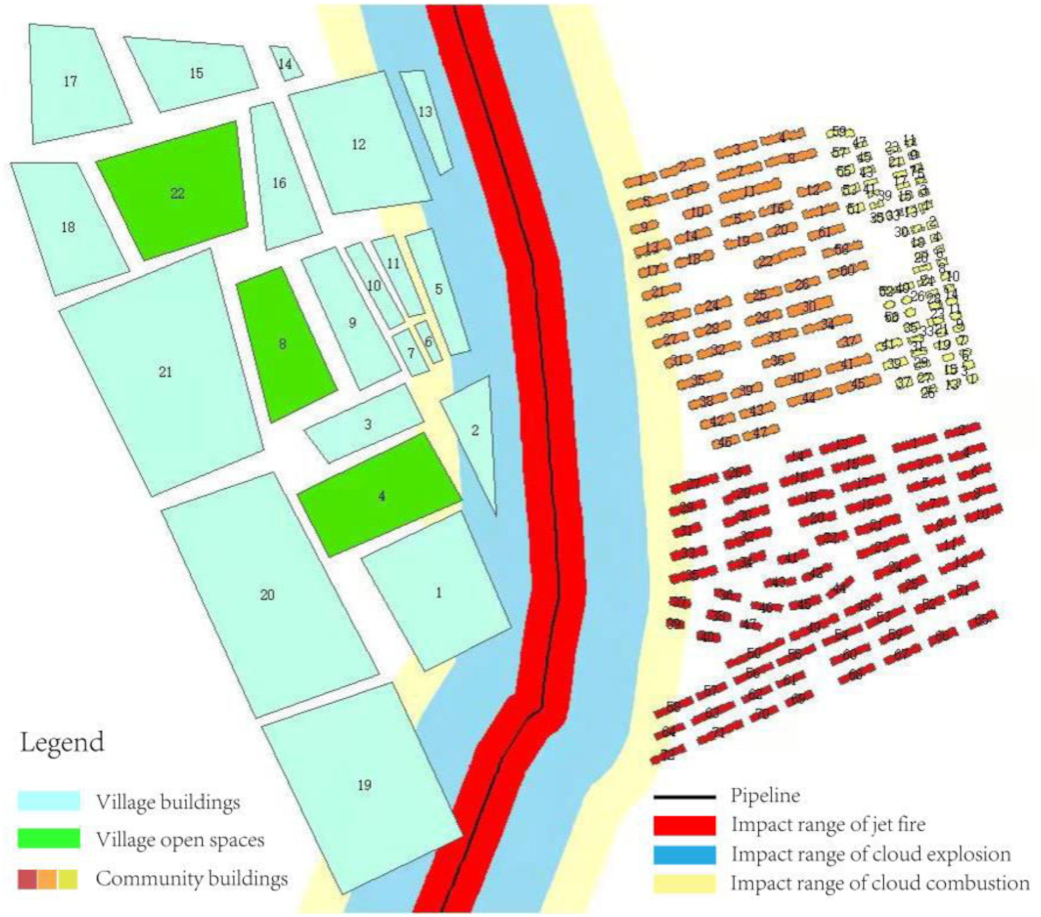
3.2. Simulation analysis of unorganized evacuation







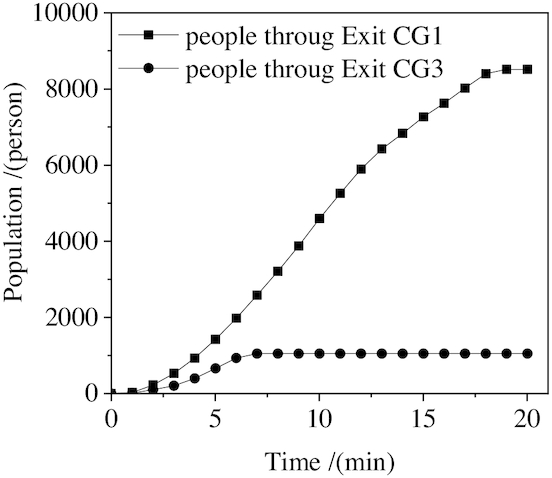
3.3. Optimization analysis of organized evacuation
3.3.1. Community evacuation space division

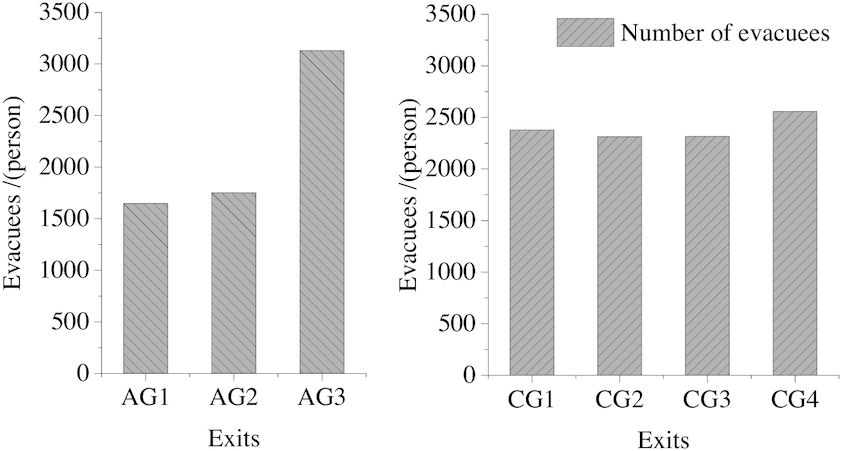
| Items | p | Li | Ui | αi | z | Uncovered community buildings Ei |
|---|---|---|---|---|---|---|
| Community A | 3 | 200 | 500 | [0.1–0.4] | 6531 | Full coverage |
| 3 | 200 | 500 | 0.5 | 6256 | 1#, 23# | |
| 3 | 200 | 500 | 0.6 | 5903 | 1#, 21#, 23#, 26#, 31# | |
| 3 | 200 | 500 | 0.7 | 5592 | 1#, 21‒23#, 26#, 27#, 31# | |
| 3 | 200 | 500 | 0.8 | 5284 | 1#, 21‒23#, 26#, 27#, 30#, 31# | |
| 3 | 200 | 500 | 0.9 | 4822 | 1#, 9#, 17#, 20‒24#, 26#, 27#, 29–31# | |
| 3 | 200 | 500 | 1.0 | 3690 | 1#, 9#, 12#, 13#, 17#, 20‒34#, 38# | |
| Community C | 4 | 200 | 500 | [0.1–0.6] | 9568 | Full coverage |
| 4 | 200 | 500 | 0.7 | 9427 | 39#, 40# | |
| 4 | 200 | 500 | 0.8 | 8991 | 37#, 39#, 40#, 58#, 64#, 72# | |
| 4 | 200 | 500 | 0.9 | 8820 | 37‒40#, 57#, 58#, 64#, 72# | |
| 4 | 200 | 500 | 1.0 | 7312 | 21#, 24#, 35‒40#, 43#, 44#, 47#, 48#, 50#, 57#, 58#, 64#, 71#, 72# |
Note: # = building number


3.3.2. Strategies for improving evacuation efficiency

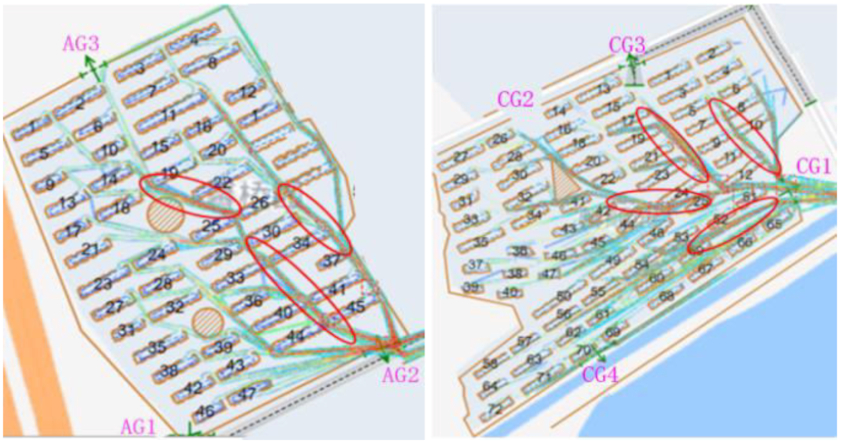
4. Conclusions
Acknowledgements
References
Information & Authors
Information
Published In

History
Copyright
Data Availability Statement
Key Words
Sections
Subjects
Plain Language Summary
Authors
Author Contributions
Competing Interests
Metrics & Citations
Metrics
Other Metrics
Citations
Cite As
Export Citations
If you have the appropriate software installed, you can download article citation data to the citation manager of your choice. Simply select your manager software from the list below and click Download.
There are no citations for this item
